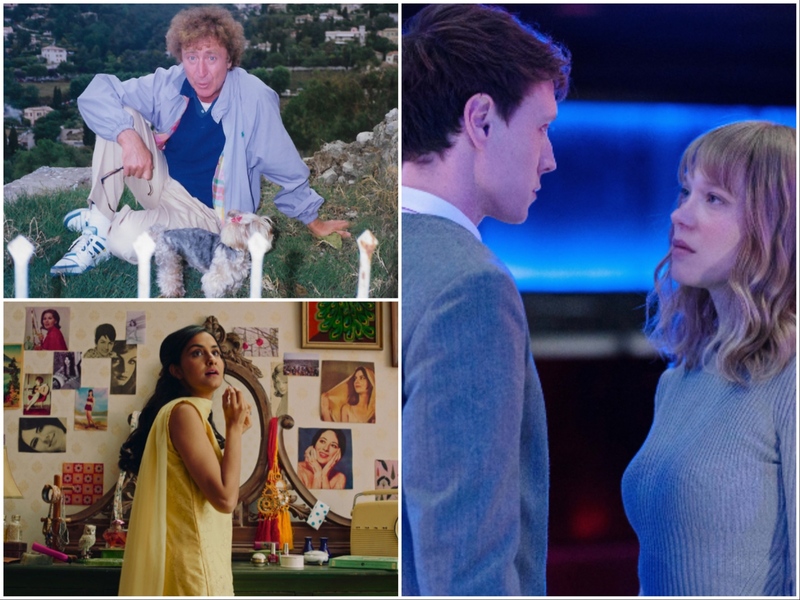The 2013 rendition of the Milwaukee Film Festival is a mere two days away. For two glorious weeks, films will be watched, debates will be hotly argued and cinephiles’ families will be kissed goodbye as they board the S.S. Film Festival, never to be seen again (for two weeks, that is).
But while movie buffs busily put together their movie-watching schedule – meals and sleep are optional – the people at Milwaukee Film are even busier making the lights come down and the credits roll on the festival.
In between all of that hustle and bustle, OnMilwaukee sat down with artistic and executive director Jonathan Jackson and programming manager Angela Catalano to talk about what it takes to bring 240 films and more to the big screen in two weeks.
OMC: What is the process behind finding these movies and bringing them to Milwaukee?
Angela Catalano: Our programming pretty much starts right after the festival ends. What we do is we basically scour other festivals. Our festival is curation based, which means that we look at the films that have run the festival circuit throughout the year and pick out what we think are the best ones. Because there are so few outlets here for independent cinema, that, to us, seems like the best option versus being a premiere festival, like Sundance. It’s not as pressing for us to get premieres because odds are these films aren’t going to come here otherwise.
OMC: You guys are one of the only occasions that can get and show film now. But there are only five actual film prints this year. How hard is it to get a hold of prints?
AC: It’s difficult. Prints aren’t really being struck anymore, so archives are getting really particular about who they’ll loan their prints out to. Some archives now are really clamping down and giving them out to people who they know. It’s just a little bit more difficult, especially because we don’t own the cinema; we rent them. It’s a different process of explaining the equipment that we bring in and the people we use. We have to explain that these people handle the prints really well, and nothing is going to get damaged.
OMC: I would imagine that was a big deal that you guys got "Earth" then?
Jonathan Jackson: And we were never guaranteed to have a print. Angela had to scour the globe – from her computer and phone – but literally we had several hits and misses where we thought we were going to find a print. It was really random how we ended up finding the one that we did.
AC: Sheer luck, really. A lot of the archives that had a print of it only had a single print, and usually they won’t loan out a film if they only have one print. So the print we have hasn’t screened publicly. It was basically from … I guess the best way to categorize him would be a collector. He was really, really nice, and was really excited about it.
JJ: Do you know the year it was struck?
AC: 1973 or 1974.
JJ: And it’s literally just been sitting.
AC: It was basically struck for educational purposes, but that really just didn’t happen. It was just this incredible find. There’s even a Dovzhenko film archive in the Ukraine, and they got back to me probably two months after I emailed them, saying they weren’t sure if they could loan it out. We were like, "Don’t worry about it."
OMC: What was the motivation behind "Earth" as the centerpiece film this year?
JJ: One, there was the collaboration with Alverno Presents. We’ve been in dialogues with them for definitely more than a year, trying to find the right way to collaborate that would be sensible for the film festival, our organization and the Alverno Presents calendar. We wanted it to be more than just a screening.
This is particularly evidenced by last year in "The Milwaukee Show," when we showed a music video that was made by local filmmakers of an Altos song, "Sing for Trouble." It really is a grand music video that features a lot of the landscape, and when we started talking about Altos, the idea of "Earth" popped into my head as a favorite silent film of mine that isn’t given, I don’t think, academically or critically enough attention as it should get as a classic film. It has a meaning and a complexity to it in terms of how it was made and how it’s connected to the Soviet Union. At its core, it’s just cinematic poetry.
I think several of us who have been working on this are just thrilled and – because we haven’t experience it yet – eagerly anticipating it as much as hopefully the audience will be that night. 18 band members live in the Oriental with this live, pristine of this very beautiful film? I think it’s going to be an otherworldly experience that you can’t get anywhere but in Milwaukee.
OMC: It’s a bold choice in a lot of ways. It’s a silent film, and a rare one at that. You guys are a growing film festival, and it’s a choice that leans toward the hard-core cinephiles.
AC: That’s something we strive for, though: providing a really good balance of festival films that have played throughout the year, but also things that people would never get to see otherwise or perhaps that they wouldn’t normally seek out. I think by identifying that as our festival centerpiece, it’s a way to introduce people to a different form of cinema. It’s great that we can bring that kind of education to people. Maybe if they like it, they look into more Soviet montage films or go to more live accompaniments. I think it’s a really good introduction for people who have not gone to films like that.
OMC: Was there a film this year that you really wanted to get into the festival but just weren’t able to?
JJ: No, we get everything we want! (laughs) Absolutely. I usually don’t like talking about this because there’s always some stuff. If we talk about when the programming process starts, technically we’ve already started for next year. There are some films that we didn’t get this year that we will likely be able to get next year.
That said, "12 Years a Slave" is a film we really wanted. There was the connection to John Ridley, who we had actually gotten his address to come here and attend. But the timing of the New York Film Festival screening of it complicated our playing – they decided to play it later in the festival – so there wasn’t enough time for us to be able to screen it. That’s definitely the case of a film that we would’ve liked to have screened. We’ve always had a great relationship with the distributor, Fox Searchlight Pictures. They had our closing night film last year, "The Sessions," and others before that. But I would put that number one on the list.
OMC: You did get "Ain’t Them Bodies Saints" just recently …
JJ: F*ck yeah we did! (laughs)
OMC: That was a huge Sundance rave. How did you manage to get that one, especially as a late get?
JJ: Going into Sundance, we were really excited because David Lowery had come to the festival with his short "Pioneer," which is one of my favorite shorts that we’ve ever shown – and I’m not just saying that because we’re screening his new feature. And he’s the nicest guy in the world. Clearly immensely talented. Plus, he has some roots here, growing up in Waukesha.
When we heard the announcement about when it was going to be released, both Angela and I said, "F*ck!" because the release date was something like August 15 or something like that. With our deadlines, there was no way in the world we would’ve been able to book it. That’s a film that should be screening for several weeks in every city in the country, or at least the top 50 or 75 media markets in the U.S.
But then as it started its roll out, great critical reviews of it, but it might not have had the audience traction or maybe it was a decision with the on-demand. But I believe in the market, Landmark chose not to show it, so that opened the door for us. It’s not easy to figure out the puzzle to insert a new film into the lineup. Potentially, we could have screened it as our member’s super secret screening, but because Lowery was already scheduled to come to the festival for the Sundance ShortsLab, it seemed like something that would be great to have fun with and publicize. Because of the cast and the reviews of the film, we thought we’d be able to still, despite not having it in the guide, generate awareness.
OMC: A reoccurring thing that keeps popping up in conversations is, "We didn’t get it in Milwaukee." Milwaukee’s certainly growing as a film town, but it’s still working its way up. What do you think is the next step for Milwaukee do you think?
JJ: For Milwaukee Film to have 10,000 members. (whispers) That’d be awesome.
AC: Period. (laughs)
JJ: More great cinema screening year-round, and great audiences for it. There is great cinema screening in Milwaukee. Sometimes you have to find it. There is a passionate community.
We invest significantly, not just in the films we put on, but also in how we put them on and the experience we try to present. We’re not necessarily perfect or where we want to be, but I’m proud to say that one of our biggest budget line items as a festival is all of the technical elements of exhibition. I feel like it’s so incredibly important to put people in that special place where they can completely lose themselves amongst fellow community members in great cinema.
Jonathan Jackson recommends: "Earth," An Evening with Paul Attanasio, any of the films in the competition category
Angela Catalano recommends: "Enter the Dragon," "2001: A Space Odyssey," "12 O’Clock Boys"
As much as it is a gigantic cliché to say that one has always had a passion for film, Matt Mueller has always had a passion for film. Whether it was bringing in the latest movie reviews for his first grade show-and-tell or writing film reviews for the St. Norbert College Times as a high school student, Matt is way too obsessed with movies for his own good.
When he's not writing about the latest blockbuster or talking much too glowingly about "Piranha 3D," Matt can probably be found watching literally any sport (minus cricket) or working at - get this - a local movie theater. Or watching a movie. Yeah, he's probably watching a movie.







